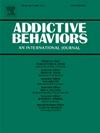Unraveling the complexity of associations between problematic internet use, anxiety, and somatic symptoms in Chinese youth: a network perspective
IF 3.6
2区 医学
Q1 PSYCHOLOGY, CLINICAL
引用次数: 0
Abstract
Background
Problematic Internet Use (PIU) is increasingly recognized as a significant public health concern among adolescents, often leading to anxiety symptoms and somatic symptoms. However, the underlying interrelationships between these symptom domains remain insufficiently understood, particularly at the symptom level.
Methods
This study applied network analysis to investigate the complexity of associations among PIU, anxiety, and somatic symptoms in a large, cross-sectional sample of 5221 adolescents aged 10–19 years from Shandong Province, China. Validated self-report instruments were used to assess PIU (IAT), anxiety (MASC), and somatic complaints (PHQ-13). Gaussian Graphical Models were constructed to identify central and bridge symptoms across the network, and sex differences were explored using the Network Comparison Test.
Results
The prevalence of PIU was 11.91%. Network analysis revealed dense interconnections among symptoms, with 64.7% of edges being non-zero. “Physical symptoms” of anxiety (MASC1) emerged as the most central and bridging symptom across the network, demonstrating the highest node strength and expected influence. The strongest edge linking PIU, anxiety, and somatic symptoms was between “physical symptoms” and “cannot breathe”. Although no significant gender differences were found in global network strength, the structure of symptom networks differed significantly between males and females. In males, the strongest bridge linked “time management & performance” with “sleep problems”, whereas in females, “withdrawal & social problems” was strongly linked to “indigestion symptoms”.
Conclusions
This study is the first to employ network analysis to map symptom-level associations between PIU, anxiety, and somatic symptoms in adolescents. The findings underscore the central role of anxiety-related physical symptoms in the network and highlight gender-specific symptom bridges. These insights offer novel directions for targeted interventions, emphasizing the need for symptom-focused and gender-sensitive treatment strategies for adolescents affected by PIU.
从网络的角度揭示中国青少年网际网路使用问题、焦虑和躯体症状之间关系的复杂性
问题网络使用(PIU)越来越被认为是青少年中一个重要的公共卫生问题,经常导致焦虑症状和躯体症状。然而,这些症状域之间潜在的相互关系仍然没有得到充分的了解,特别是在症状水平上。方法本研究采用网络分析对来自中国山东省的5221名10-19岁青少年的PIU、焦虑和躯体症状之间关联的复杂性进行了调查。使用经过验证的自我报告工具评估PIU (IAT)、焦虑(MASC)和躯体抱怨(PHQ-13)。构建高斯图形模型来识别网络中的中心症状和桥梁症状,并使用网络比较检验来探索性别差异。结果PIU患病率为11.91%。网络分析显示症状之间存在紧密的联系,64.7%的边缘为非零。焦虑的“身体症状”(MASC1)是整个网络中最核心和最桥接的症状,显示出最高的节点强度和预期影响。将PIU、焦虑和躯体症状联系起来的最强边缘是“身体症状”和“无法呼吸”之间。虽然在整体网络强度上没有发现显著的性别差异,但症状网络的结构在男性和女性之间存在显著差异。在男性中,最强的桥梁是“时间管理”;“表现”与“睡眠问题”有关,而女性则与“戒断”有关。“社会问题”与“消化不良症状”密切相关。结论本研究首次使用网络分析来绘制青少年PIU、焦虑和躯体症状之间的症状水平关联。研究结果强调了与焦虑相关的身体症状在网络中的核心作用,并强调了性别特异性症状桥梁。这些见解为有针对性的干预提供了新的方向,强调需要对受PIU影响的青少年采取以症状为重点和性别敏感的治疗策略。
本文章由计算机程序翻译,如有差异,请以英文原文为准。
求助全文
约1分钟内获得全文
求助全文
来源期刊

Addictive behaviors
医学-药物滥用
CiteScore
8.40
自引率
4.50%
发文量
283
审稿时长
46 days
期刊介绍:
Addictive Behaviors is an international peer-reviewed journal publishing high quality human research on addictive behaviors and disorders since 1975. The journal accepts submissions of full-length papers and short communications on substance-related addictions such as the abuse of alcohol, drugs and nicotine, and behavioral addictions involving gambling and technology. We primarily publish behavioral and psychosocial research but our articles span the fields of psychology, sociology, psychiatry, epidemiology, social policy, medicine, pharmacology and neuroscience. While theoretical orientations are diverse, the emphasis of the journal is primarily empirical. That is, sound experimental design combined with valid, reliable assessment and evaluation procedures are a requisite for acceptance. However, innovative and empirically oriented case studies that might encourage new lines of inquiry are accepted as well. Studies that clearly contribute to current knowledge of etiology, prevention, social policy or treatment are given priority. Scholarly commentaries on topical issues, systematic reviews, and mini reviews are encouraged. We especially welcome multimedia papers that incorporate video or audio components to better display methodology or findings.
Studies can also be submitted to Addictive Behaviors? companion title, the open access journal Addictive Behaviors Reports, which has a particular interest in ''non-traditional'', innovative and empirically-oriented research such as negative/null data papers, replication studies, case reports on novel treatments, and cross-cultural research.
 求助内容:
求助内容: 应助结果提醒方式:
应助结果提醒方式:


